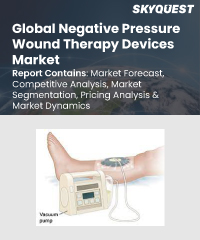
Report ID: SQMIG35A2463

Report ID:
SQMIG35A2463 |
Region:
Global |
Published Date: March, 2024
Pages:
219
|
Tables:
91 |
Figures:
76
North America prominently commanded the market with the largest revenue share, accounting for 38.9%. This remarkable position can be attributed to several key factors that characterize the healthcare landscape in the region. Notably, North America boasts a substantial healthcare expenditure and is equipped with a highly advanced healthcare infrastructure. As a result of these advantageous factors, the adoption of Negative Pressure Wound Therapy (NPWT) devices has witnessed a significant upsurge, gaining traction across both hospital and homecare settings alike.
The robust healthcare expenditure within North America underscores the region's commitment to delivering top-notch medical care. This commitment, coupled with the sophisticated healthcare facilities in place, has established a conducive environment for the widespread utilization of NPWT devices. These advanced devices have found a significant foothold in both hospital settings, where they are applied for patients with varying wound conditions, as well as in homecare settings, providing a flexible and effective option for patients to manage their wounds with greater convenience.
Meanwhile, in the Asia Pacific region, a distinctive trend is poised to unfold over the forecast period. The market in this region is projected to exhibit a highly promising Compound Annual Growth Rate (CAGR). This projected growth trajectory primarily stems from the escalating occurrences of traumatic events, particularly burns, which are prevalent in this region. The rising number of traumatic incidents has subsequently triggered an increased demand for advanced wound care therapies, including NPWT, to address the intricate and demanding nature of burn-related wounds.
As such, the Asia Pacific region is anticipated to emerge as a significant growth hotspot for the NPWT market, owing to its unique healthcare challenges and the imperative need to provide effective wound management solutions for a diverse range of patients. This trend highlights the adaptable nature of NPWT technology, which can be applied across various contexts and wound types, making it an indispensable asset in the realm of modern wound care.
Our industry expert will work with you to provide you with customized data in a short amount of time.
REQUEST FREE CUSTOMIZATIONWant to customize this report? This report can be personalized according to your needs. Our analysts and industry experts will work directly with you to understand your requirements and provide you with customized data in a short amount of time. We offer $1000 worth of FREE customization at the time of purchase.

Report ID: SQMIG35A2463